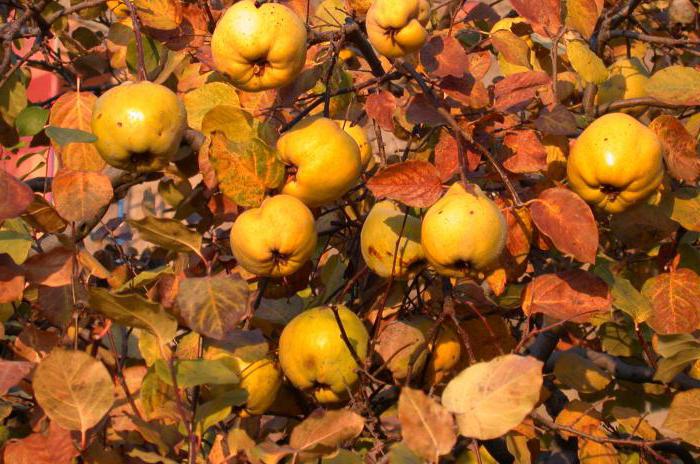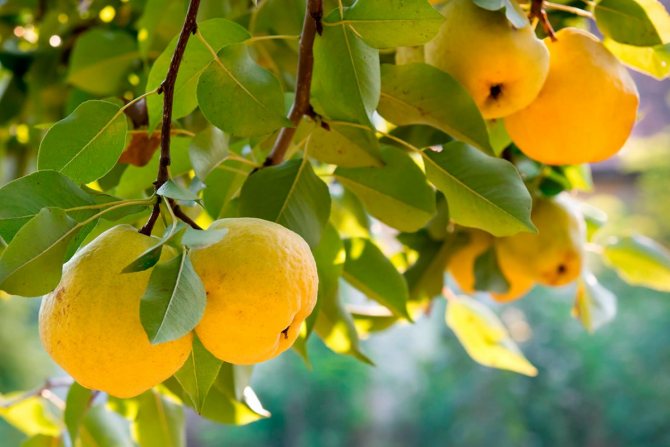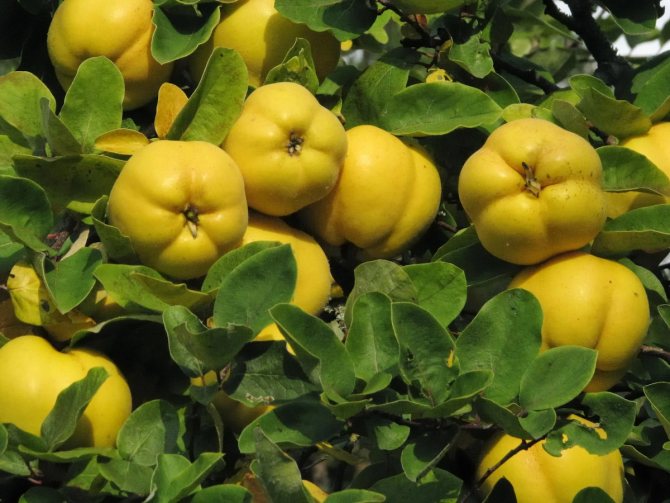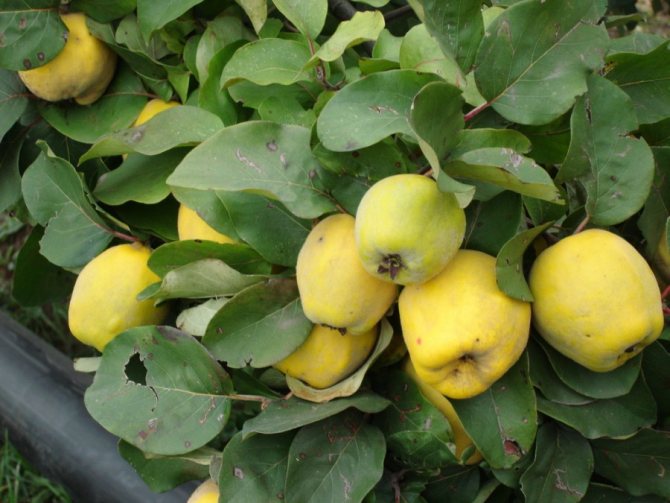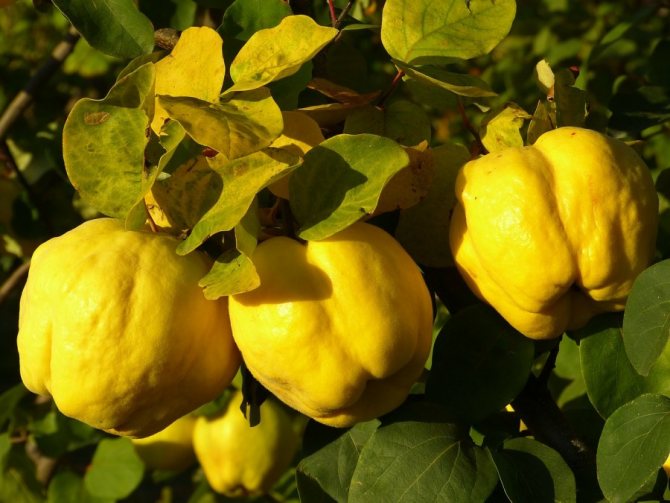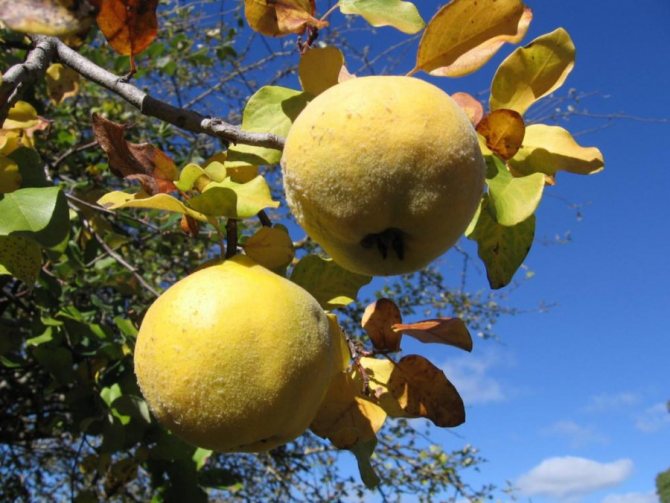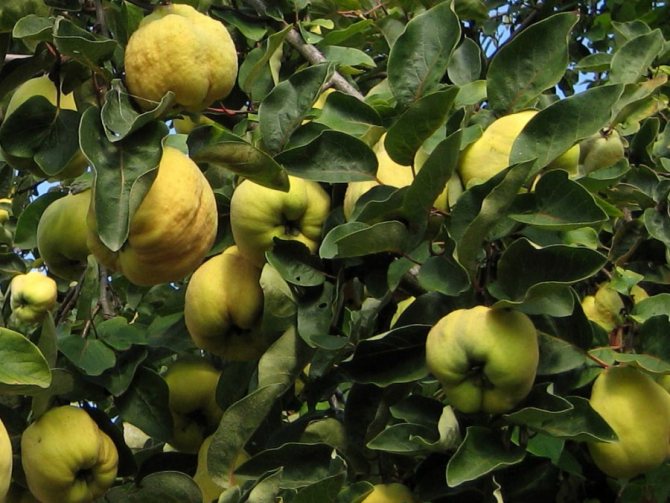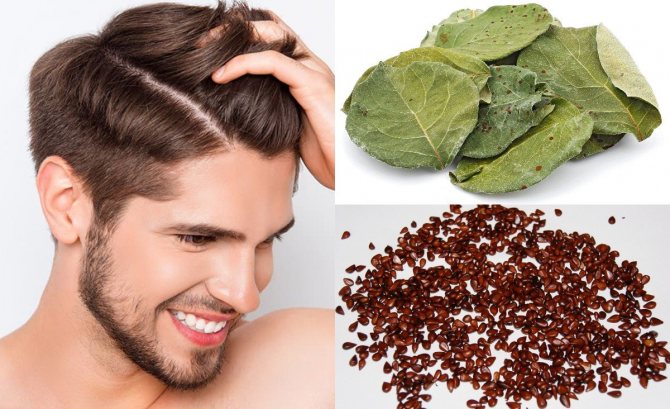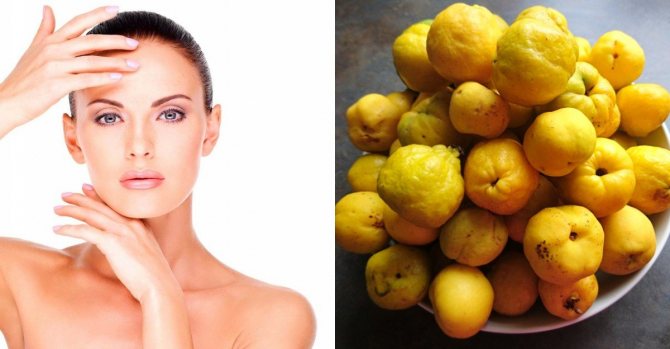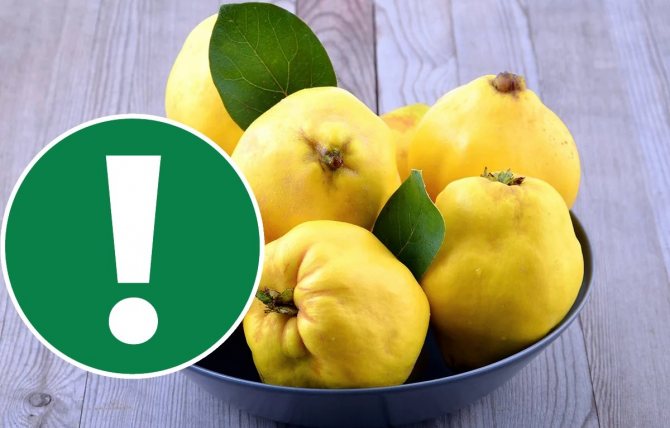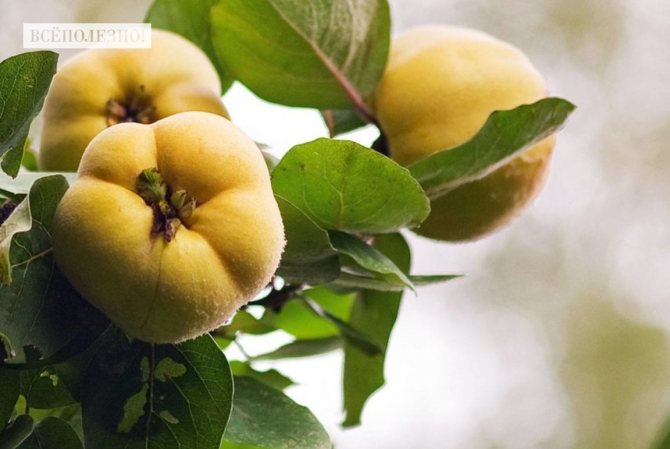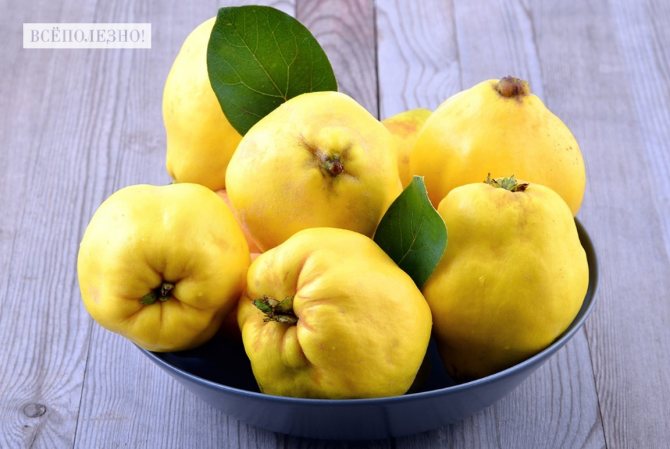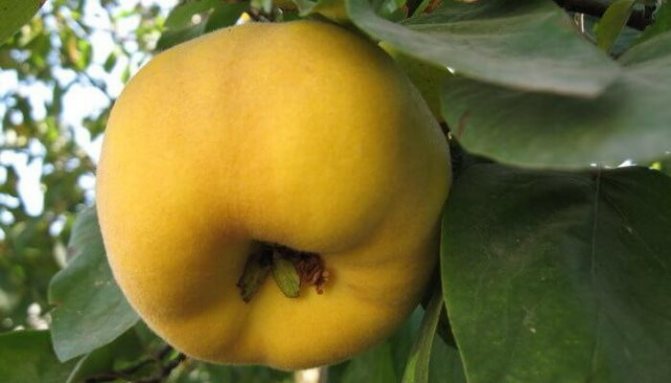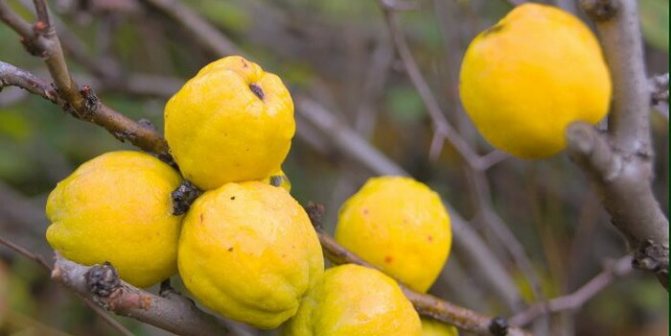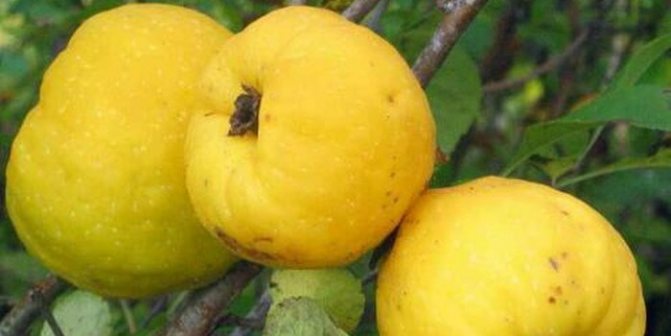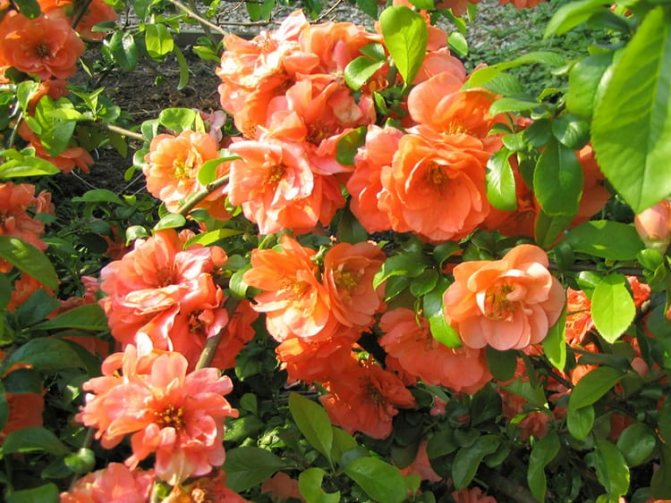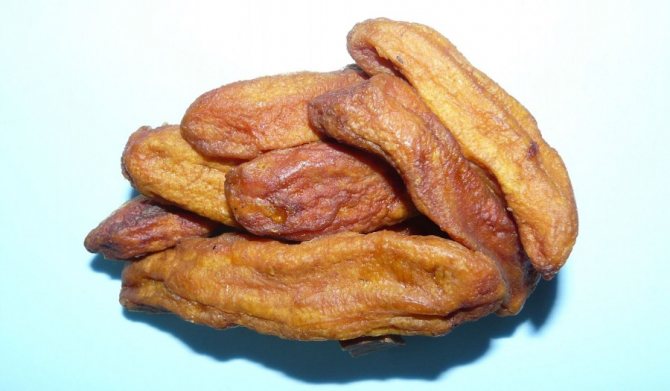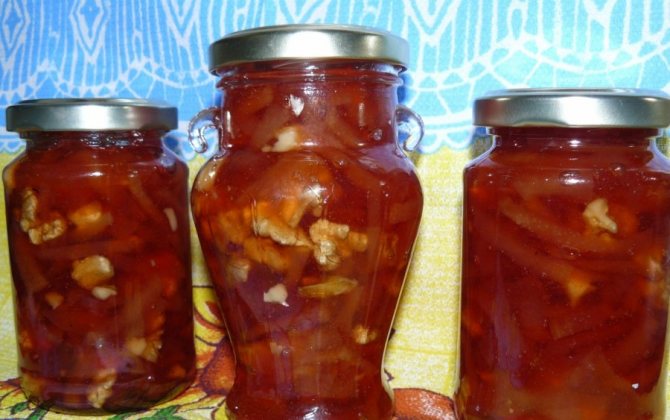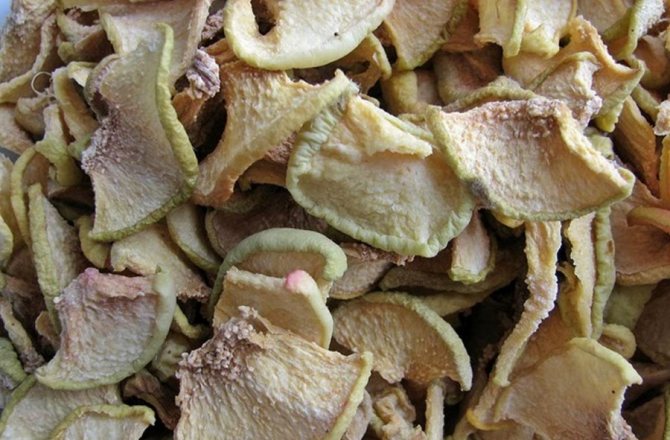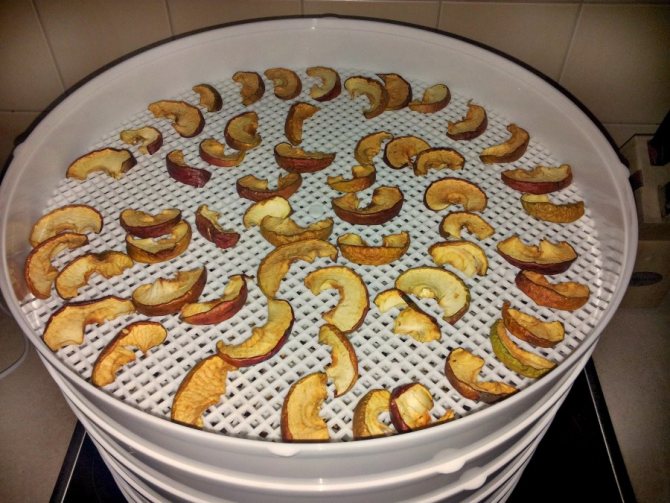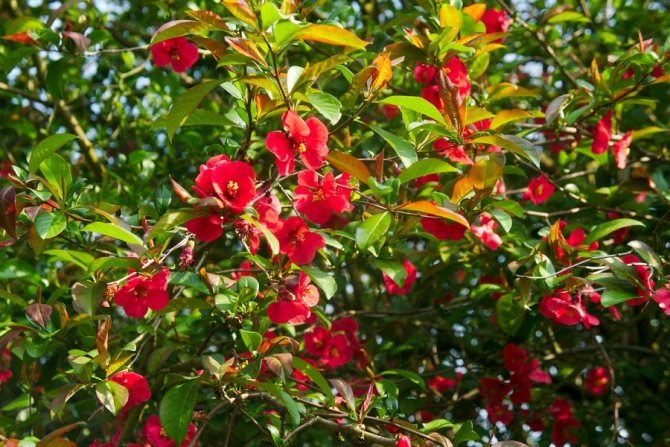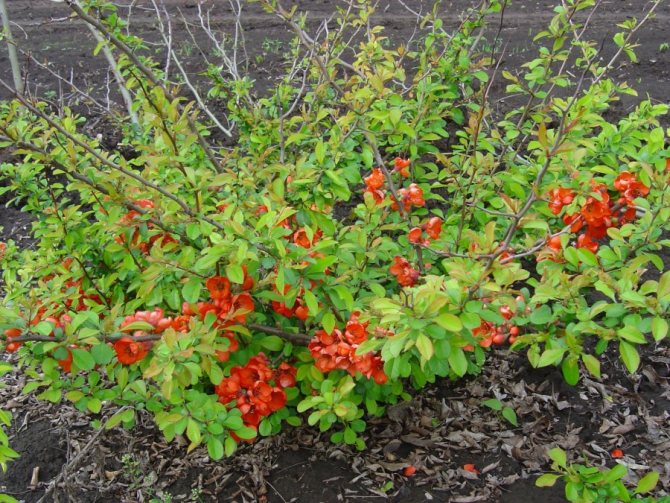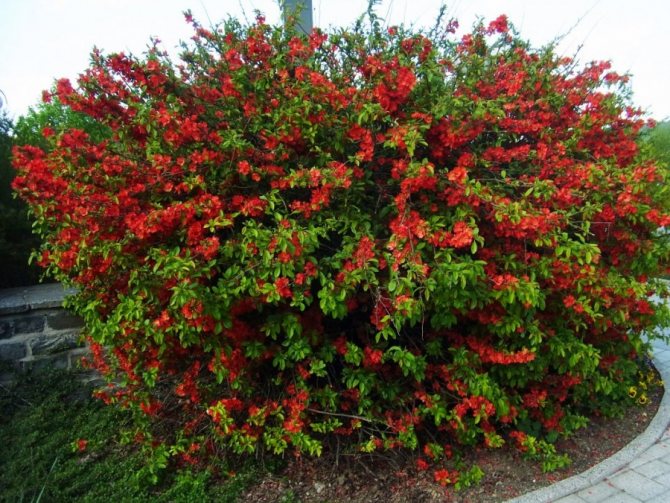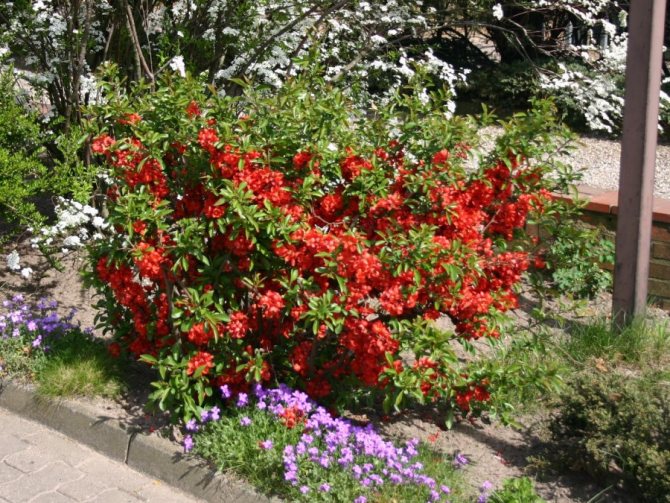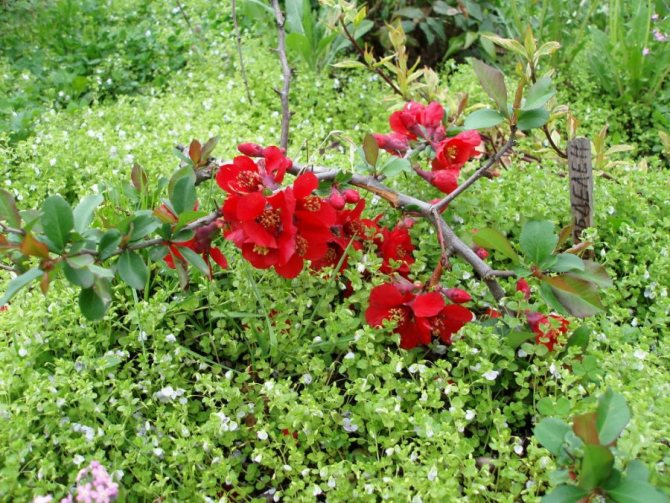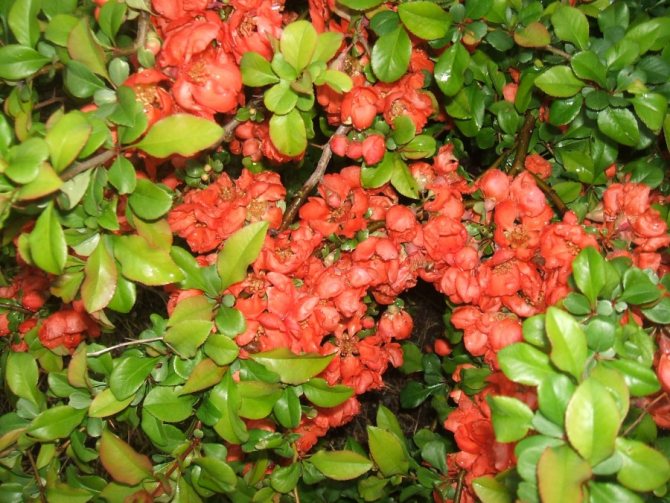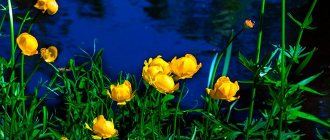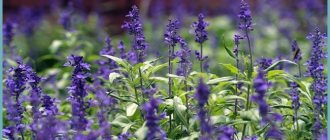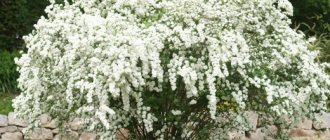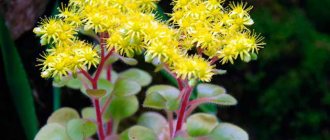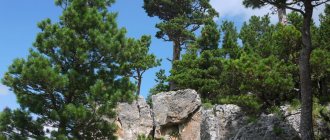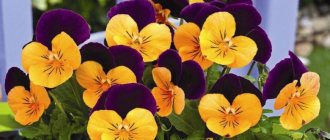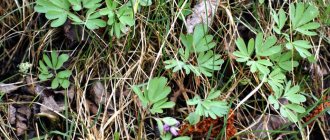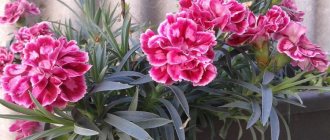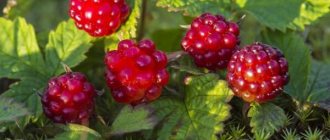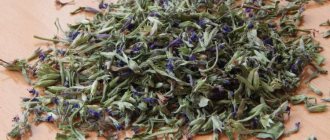With quince, which is a kind of hybrid of apple and pear, people got to know a long time ago - almost 45 centuries ago. And, despite the "age", she continues to enjoy unchanged popularity. Today, this fruit has a wide variety of uses, including far from the last place among the most useful medicinal plants.
Scientists and gardeners know several types of this, in many ways, unique fruit. Among them, the most widespread are the Chinese and Japanese quince shrubs, the useful properties of which should be studied closer and at the first opportunity to use new knowledge.
Trojan War: Eris and Quince are to blame for everything?
Ask any more or less educated person, and he will answer you that the reason for the beginning of the Trojan War was the unseemly act of Paris, who kidnapped Helen, the wife of Tsar Menelaus.
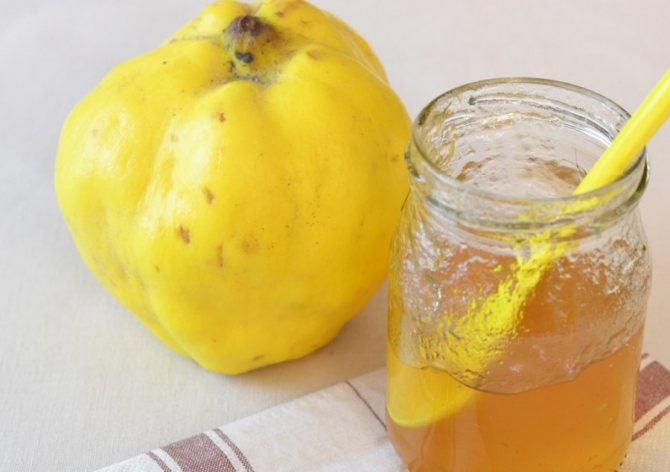
In fact, the story began much earlier. From the moment when they did not want to invite Erida, the goddess of discord, to one wedding. Enraged and offended, she was not invited, left her little gift on the table and left.
The gods saw a golden fruit with the inscription "Most Beautiful." Each of the three goddesses - Venus, Minerva and Juno - of course believed that the title of "fairest" should rightfully belong to her. Paris was asked to resolve the dispute (all the other guests reasonably refused, fearing the anger of the losing beauties).
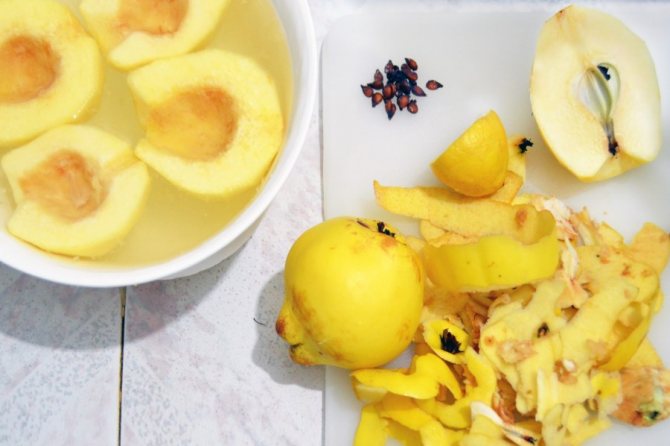

Minerva and Juno promised the young man power, courage, military victories, knowledge and wisdom. And Venus is the possession of the most beautiful woman in the world. The prize went to Venus, Paris was rewarded with Helen. And the apple of discord, as botanists believe, and historians do not contradict them, was not an apple at all, but a quince - the most common, tough and hardly edible!
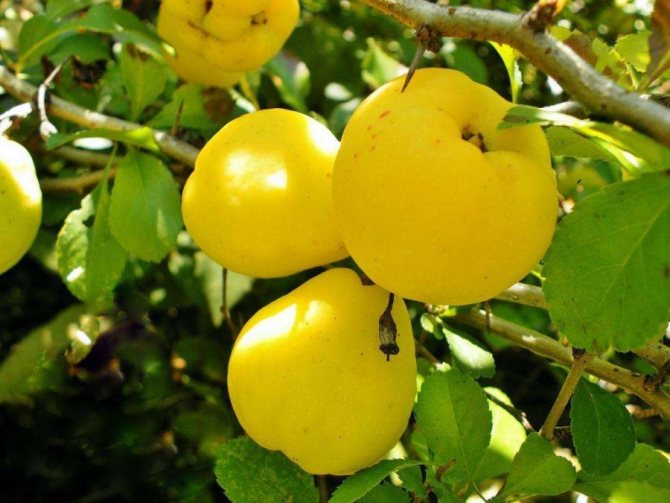

The benefits of seeds
Using folk recipes from quince seeds, you need to be careful, because they contain a poisonous substance, the use of which will greatly affect your health. But in order to feel at least minimal harm, they need to be consumed at least 70 g. But in moderate doses, the following benefits of quince seeds are noted:
- The tannins and mucous substances contained in it improve the functioning of the gastrointestinal tract and can serve as a natural laxative.
- Relieves cough and helps relieve inflammation. The seeds are used for lotions for barley in the eyes.
- They are used as a basis in the preparation of a nutritious cosmetic product.
Botanical name: Quince (Cydonia), a monotypic genus of deciduous trees or shrubs of the Roseae family, fruit and ornamental crop.
Homeland of quince: Caucasus, Asia Minor, Northern Iran.
Lighting: photophilous.
The soil: clay or sandy, the composition is not demanding.
Watering: drought-resistant, at the same time tolerates prolonged waterlogging.
Maximum tree height: 7 m.
Average tree lifespan: 30 - 50 years old
Landing: seeds, cuttings, root shoots and grafting.
General description of the quince plant
The quince plant is a small tree or a large multi-stemmed shrub with a dense spreading crown, growing up to 1.5 - 4, less often 7 m in height.
The trunk, up to 50 cm in diameter, and skeletal branches are covered with thin, constantly flaking dark gray or red-brown bark, young branches are brownish-gray, with dense tomentose pubescence.
Shoots are also densely pubescent, have a gray-green color. The trunk is characterized by oblique growth, which is why in the first years of life the tree requires a garter.
Quince leaves are alternate, ovoid or oval in shape with a pointed or obtuse apex, large, 5 - 12 cm in length and up to 7.5 cm in width, with short, up to 2 cm, petioles. The leaf plates are painted dark green above, grayish below, with white tomentose pubescence.
Blooming quince in the photo
Quince flowering time - May-June, duration - about 3 weeks. Flowers are single, large, up to 5, 5 cm in diameter, pink or white with yellow stamens, with short, downward pedicels.
Unlike other pome crops, they appear on the lateral branches of the generative shoots of the current year, therefore they bloom late, after the leaves appear.
Due to this feature, quince flowers are usually not affected by recurrent spring frosts, and fruiting occurs annually. Blooming quince (pictured above) is very decorative, at the end of spring flowers abundantly cover the branches from top to bottom and serve as a real decoration of the garden.
The smell of ripe quince
Fruits ripen in September-October, are round or pear-shaped false apples, often obtuse ribbed, pubescent at first, smooth when mature.
The color is lemon or dark yellow, with some varieties with a slight blush. The pulp contains many stony cells, so even in ripe quince it is tough, not juicy, sweetish-tart to taste, astringent.
In wild representatives of the species, the yield is very low, 2-10 fruits weighing 60-100 g from each plant. Cultivated varieties are much more productive, up to 20-50 tons per hectare, the weight of one fruit is on average 100-400 g, in some specimens it can reach 2 kg.
A distinctive feature of the fruits is their special aroma, due to the presence of pelargonium-ethyl and enanth-ethyl esters in the skin. The smell of ripe quince resembles the smell of a sour apple with hints of tree bark, autumn flowers and spices, it persists even after heat treatment.
Quince seeds
In the heart of the fruit there are five, lined with a parchment layer and containing a large number of brown bones of an obovate shape.
Quince seeds are covered with a skin, its matte whitish film contains up to 20% mucus, which swells well in water and is used in medicine and the textile industry.
The content of the amygdalin glycoside gives the quince seeds a characteristic bitter almond aroma, and at the same time determines their toxicity, therefore, when using seeds for medical purposes, care must be taken not to grind them or ferment infusions and decoctions.
The plant has a widely branched root system. Horizontal roots extend to the sides at a distance that exceeds the crown projection by 3-4 times, vertical roots lie no more than 1 m deep into the soil.
Since the main part of the roots is located close to the surface, the tree easily tolerates replanting, but does not respond well to inter-row cultivation and turfing.
The quince tree grows especially actively in the first years of the growing season. After entering the fruiting period, which in culture falls on 3-5 years, growth slows down somewhat. The tree bears fruit actively for about 20 years, and its maximum life span is 50 years.
Homeland of quince: origin and history of use in culture
The plant is one of the oldest fruit crops known to mankind for over 4000 years. The Caucasus is considered the birthplace of quince, from where it came to Asia Minor and further to Ancient Greece and Rome. Already at the beginning of the last millennium BC.These fruit trees grew in abundance on the island of Crete, some historians believe that the name of a kind, Cydonia, quince received from the Cretan city of Sidon.
The first written mentions of the culture appear already in 650 BC, according to the ancient Greek legend, the golden apple presented by Paris to the goddess Aphrodite was the quince fruit.
According to Plutarch, fruits with their sweetness and tartness were considered at that time a symbol of any marriage, and were necessarily used in various rituals associated with the ceremony of marriage.
The ancient Greeks called the plant Melon Kydaion, it is with this name that the second version of the origin of the genus name is associated.
From Greece, quince goes to Italy. A detailed description of it is found in the writings of Pliny, who already in 75 BC. 6 varieties of this fruit tree were known, which was used not only for food, but also for medicinal purposes.
A testament to the popularity of the fruit in ancient Rome - the first cookbook of the famous Roman glutton Apicius, which describes a recipe for making a dessert from quince. Pictures with images of culture are found on the walls of destroyed Pompeii, the image of a tree is present in the paintings of that period.
Where does quince grow
Quince has long been grown in the East. Unlike ancient Greece and Rome, here the plant has always been considered a symbol of purity and health, even Avicenna in his writings characterized its fruits as a means that improves heart activity and digestion.
Ripe quince in pictures
In Western Europe, the fruit has been known since the XIV century, and since that time it has been widely used in cooking in different countries.
Trees and shrubs of quince are widespread in the wild in the Caucasus, Northern Iran, Central and Asia Minor, grow along the edges of forests, near water bodies and on the slopes of mountains. Cultivars thrive not only in the southern, but also in temperate latitudes on all continents, excluding Antarctica.
Among the places where quince grows, we note not only Europe, where it can be found everywhere from the Caucasus, to Norway, Central and East Asia, but also Australia, Oceania, North and South America, north and south of the African continent.
The plant is cultivated as a fruit and ornamental crop. At the same time, on the territory of Russia, quince fruits regularly ripen only in the southern regions (Caucasus, Krasnodar Territory). In the middle lane, due to early frosts, ripe fruits can be obtained only at the end of October in extremely favorable years.
Here, as in the countries of Central and Northern Europe, the culture is mainly decorative, therefore, wild-growing forms are more often used, which are less demanding on growing conditions and more resistant to diseases. They lend themselves well to shearing and can be grown in hedges.
Quince is also considered one of the best pear rootstocks. The grafted seedlings are compact, resistant to high temperatures and drought tolerant. In addition, the tree is an excellent honey plant.
The advantages of a cultivated quince include its unpretentiousness. It can grow for a long time without irrigation in conditions of a lack of moisture, and at the same time it can withstand flooding for 20-30 days, it is salt-tolerant, it develops well on any soils and in places with a close occurrence of groundwater.
Currently, work is underway to create intergeneric hybrids of quince and apple trees, which will allow using all the positive qualities of the culture, and at the same time increasing frost resistance and resistance to diseases, and improving the taste of fruits.
Diseases and pests of quince
One of the drawbacks that hinder the expansion of the area of growing quince in modern gardens is its tendency to be affected by many common diseases and pests of pome crops. In this regard, it should be avoided planting next to wild apple trees, irga, hawthorn, mountain ash.
Among the common diseases of quince is fruit rot (pome moliniosis), which is combated by pruning and burning affected branches, disinfecting wounds with mercury chloride solutions, prophylactic spraying with foundationazol and dipterex in dosages recommended by the manufacturer, in the period from bud swelling to the beginning of flowering.
Subcutaneous spotting of fruits causes significant harm to plantings, which reduces their taste and presentation. To prevent the disease, foliar feeding with microelements (0.2% solution of boric acid or zinc sulfate) is used, varieties resistant to the disease are grown.
The plant is also affected by brown leaf spot caused by fungal spores. During flowering, spores fall on the stigmas of the flower, and subsequently lead to the fall of the ovaries. Control measures are the same as for fruit rot.
Common pests include:
Apple pseudo-bark beetle, which is destroyed by hand, collecting insects while inspecting tree trunks in spring, in April, and in autumn, in September;
Apple moth, from which the fruits are protected by isolating them with paper covers after reaching a diameter of 2.5 cm;
Leaf miner moths whose larvae are extremely insecticide-resistant. From natural remedies, it is recommended to prune and destroy affected leaves, protect the plant from laying larvae with non-woven materials, and use the natural enemies of moths - riders.
Photo gallery
Interesting Facts
- about 1/5 of the world harvest of quince is grown in Turkey;
- the quince tree is unique, in all nature there are no relatives to it;
- quince fruit can weigh up to 2 kilograms;
- the Portuguese quince variety was bred by man in ancient times;
- quince trees and shrubs are often used as hedges. With proper care, the plant grows into a beautiful green fence;
- 1/10 of the fruit is sugar;
- fruit seeds are used in medicine and are officially recognized as a medicinal product;
- the peoples of the Mediterranean dedicated the fruits to Venus and considered the quince a symbol of love and fertility;
- quince is a part of elite white wines;
- the word "marmalade" is translated from Portuguese as "quince puree";
- in Armenia, quince flower petals are used in the preparation of national dishes, namely salads;
- in Azerbaijan there is a dance named after the fruit - ayvaguli.


Classification
The species consists of five varieties, of which two are decorative:
- pyramidal (f. pyramidalis) - a characteristic feature of the crown
- marble (f. marmorate) - with yellow and white variegated leaves
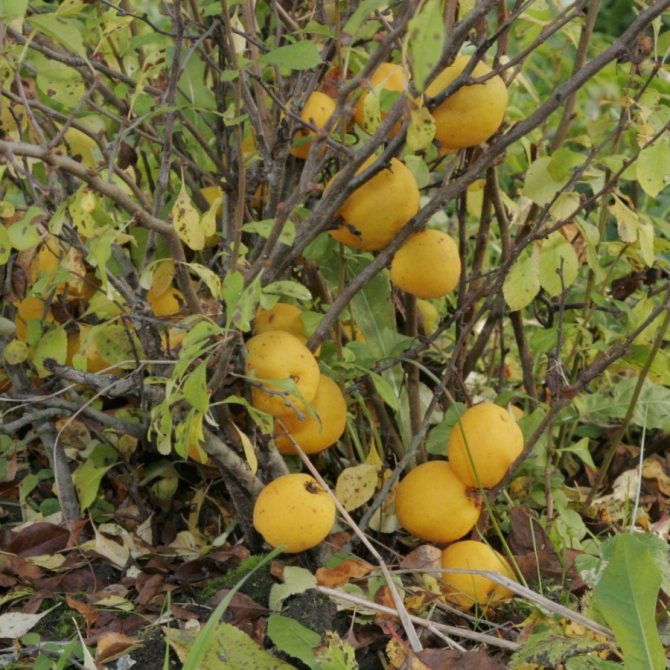

And three groups according to the shape of the fruit:
- apple (f. maliformis)
- pear-shaped (f. pyriformis)
- Portuguese, rib-pear-shaped (f. lusitanica)
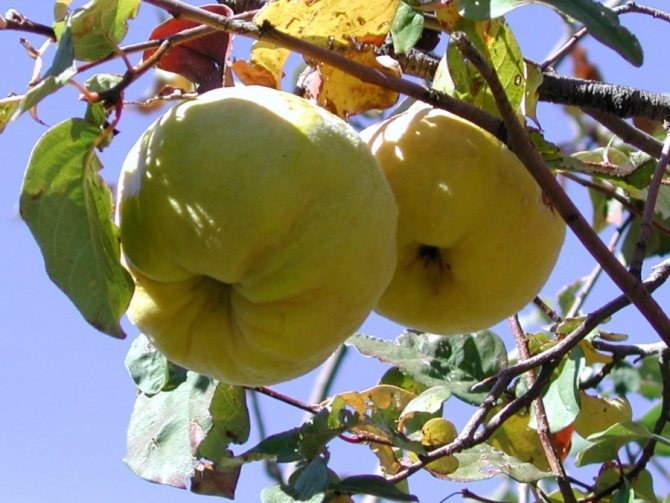

In culture from time immemorial. There are more than 400 varieties of garden quince in the world, of which only a tenth is grown on the territory of Russia and neighboring states. Of the traditionally cultivated in the Caucasus and Transcaucasia, for example, the Scythian Gold, Muscat, Aurora, Vraniska Denmark, included in the State Register, are popular local ones - Atbashi, Dzhardash, Merginskaya large-fruited, Ordubad and others.
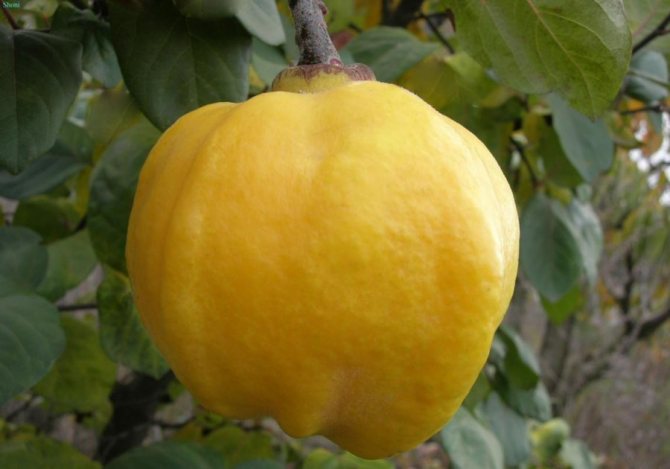

In the region of the Lower Volga region, the old French variety Anzherskaya is grown, as well as some other varieties: Collective, Krasnoslobodskaya, Teplovskaya, Maslyanka late and early.
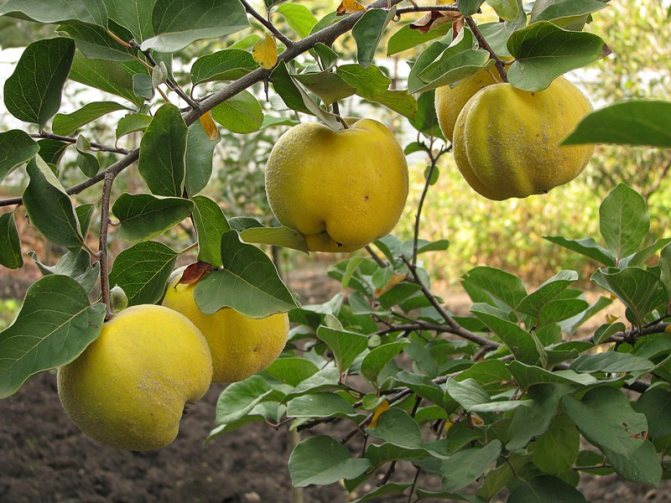

The varieties bred in Central Asia surpass the Caucasian ones in taste, but are inferior in size and weight of fruits. In a temperate climate, Michurinskaya quince became widespread, and especially for cultivation in the Central region in 1998, the Moscow Susova quince was bred - small-fruited, but unusually fragrant.


Other economically valuable qualities of this variety include high winter hardiness, resistance to diseases and pests, and abundant annual fruiting.
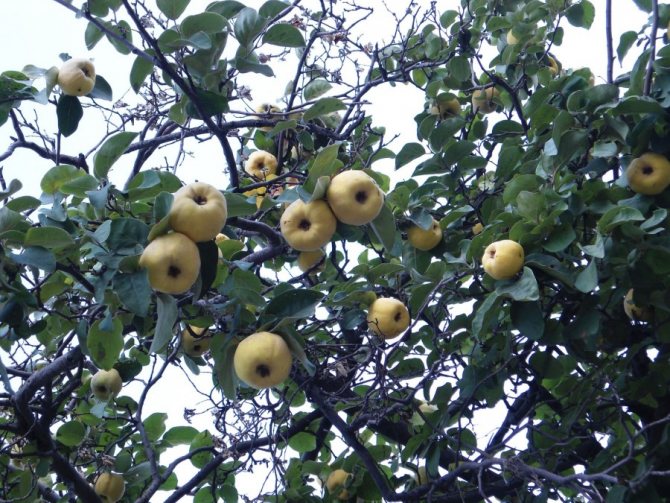

Varieties
There are many varieties of common quince, but only two dozen are registered in the State Register of the Russian Federation, and most of them were bred in the last century.Varieties differ in the shape and size of the fruit, the ways of their use, yield, and also the ripening time. The earliest ones can be partially ready for use at the end of summer, the later ones ripen closer to November.
- Early butter dish. Fruits weighing up to 350 g are lemon-yellow in color, conical-rounded, with yellowish-white flesh. Ripen at the end of September.
- Juicy. Ripening - September. Fruits weighing about 250 g, juicy. The variety is considered to be high-yielding, drought-resistant and frost-resistant.
- Harvest Kuban. Differs in large fruit size (up to 500 g), high yield, resistance to the vagaries of the weather. Early variety, relatively juicy.
- Astrakhan. Ripening is medium early. Fruits are pear-shaped, weighing about 200 g, with dense yellow pulp, sour, tart.
- Beretsky. A mid-season variety of Hungarian origin, partially self-fertile, requires pollinators. Pear-shaped fruits, weighing about 270 g, are considered very tasty: one of the few varieties with a slight astringency.
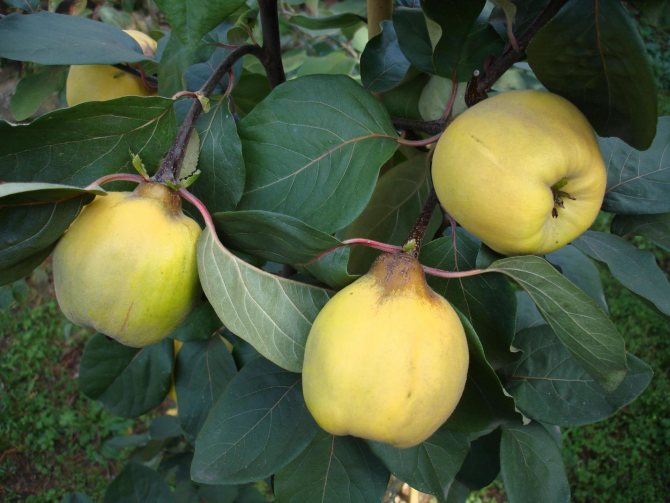

Beretski - pear-shaped foreign variety
- Buinakskaya large-fruited. A variety from Dagestan, ripens very late, but differs in very large pear-shaped fruits (up to 700 g). It is considered one of the most drought and disease resistant.
- Rumo. Quite a popular variety, one of the most undemanding to conditions. Oval fruits grow up to half a kilogram, differ in very weak astringency and high, for quince, juiciness. Ripens at the end of September, high-yielding.
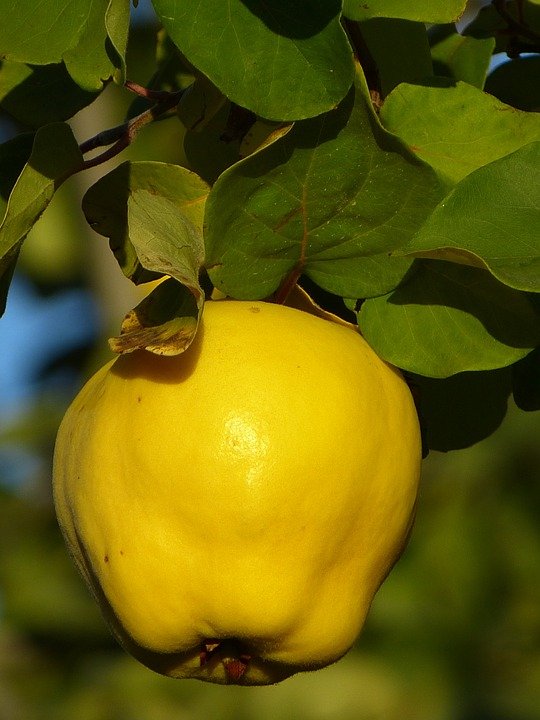

Rumo is one of the most popular varieties
- Codryanka is one of the earliest ripening varieties. Fruits are juicy, weighing an average of 200 g, relatively sweet, universal use.
- North. One of the most winter-hardy varieties. Fruits are small, greenish-yellow, with a felt coating. They have a strong aroma and are relatively sweet.
- Apple. Fruits weighing 200-300 g, similar to apples, lemon-yellow. The pulp is quite juicy, slightly tart, sweet and sour. The variety is late, has good fruit preservation, is characterized by high productivity.
Harvest processing
Large, beautiful and fragrant quince fruits in their raw form are practically not suitable for food. Therefore, most of the harvest is put into processing. In addition to traditional compotes, preserves, marmalade, jams and marmalades, quince serves as an excellent raw material for obtaining a very healthy and tasty juice.
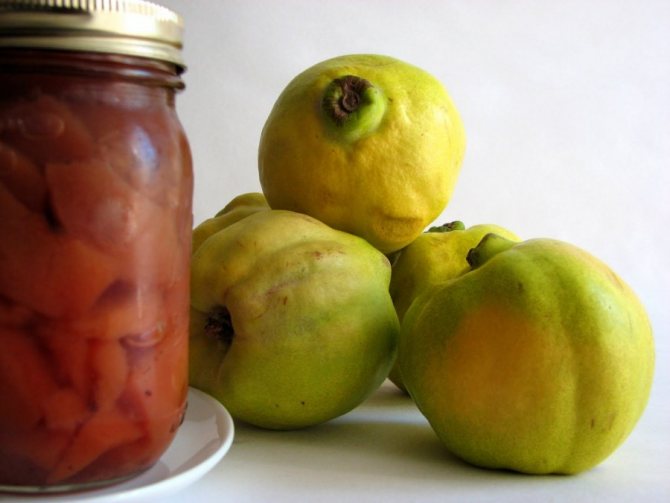

Quince juice tastes better when combined with other fruit juices (apple, peach, banana), or mixed with pumpkin. Good both fresh and canned.
- Olives - what is their feature? Useful properties for humans, 120 photos of fruits


Cherry plums are the best varieties of fruits. 115 photographs and a detailed overview of all the properties of cherry plum for humans.
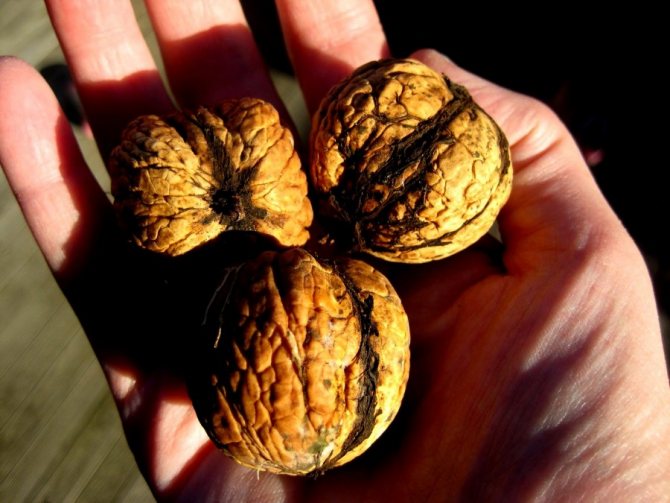

Walnut tree - useful properties. How to plant and care for a tree (110 photos)


But this does not limit the use of quince fruits in cooking. It can be used to make savory sauces for meat dishes and poultry. Stewed or baked, quince is added to a casserole, pilaf, porridge.
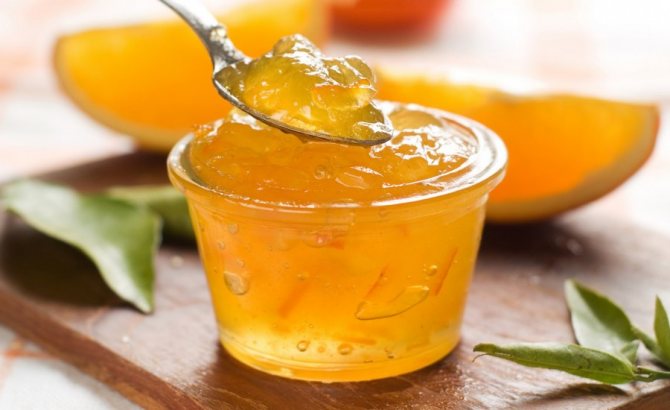

Finally, the fully ripe fruits of some of the nutmeg varieties can be used raw - you just need to know when to pick the quince so as not to pluck the unripe fruits. Raw quince, cut into slices, is added to tea to enrich its taste and aroma: it's even better than lemon tea!
Why is Japanese quince useful?
The fruits of the described culture have anti-inflammatory, immunomodulatory and diuretic manifestations. They will be useful to different categories of the population.
- Preparations from Japanese chaenomeles have the following effects on the human body:
- improve appetite and stimulate digestion;
- stop inflammatory processes;
- help with diarrhea;
- useful in diseases of the respiratory system, including pneumonia and tuberculosis;
- alleviate joint diseases;
- strengthen blood vessels and have a beneficial effect on the work of the cardiovascular system;
- remove harmful cholesterol;
- stabilize immunity and increase stress resistance.


Useful properties for women
Consuming Japanese quince fruit is good for the appearance, as their pulp contains antioxidants. In addition, this plant can be used to make homemade cosmetics. The ability of these fruits to stimulate metabolism helps to maintain a slim figure. For this, tea is made from them. Chaenomeles also contributes to the recovery of the body after childbirth.
- Japanese quince will be a useful herbal product for pregnant women:
- help to cope with nausea in the first trimester;
- will strengthen the immunity of the expectant mother;
- contains iron, the need for which increases, as a result of which anemia often occurs in pregnant women;
- serves as a prevention of varicose veins;
- help to cope with swelling.
Important! Pregnant and lactating women should not abuse these fruits. They can cause constipation not only in the mother, but also in the baby (through breast milk), which will provoke colic in the baby.
For men
The use of Japanese quince will help men to increase or restore potency, will increase the likelihood of conceiving a baby. Antioxidants will prolong youth and improve well-being, help withstand stress from physical exertion and when exposed to adverse environmental conditions.
The use of quince is a preventive measure against inflammation of the prostate gland and urinary system, prostate cancer. For men, the ability of plant materials to regulate blood pressure and remove cholesterol will not be superfluous.
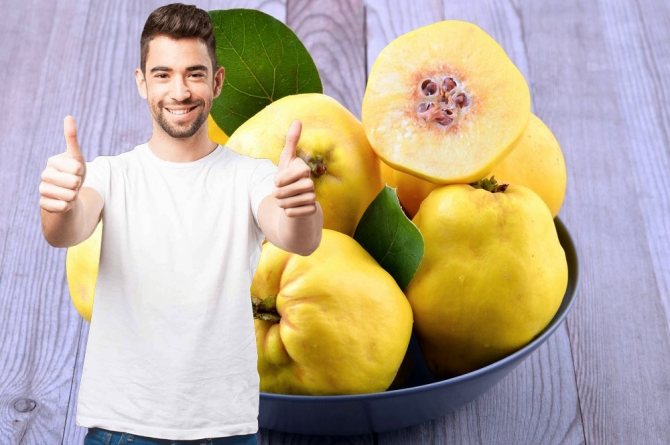

Smokers will benefit from the beneficial effect of quince on the respiratory system.
For kids
The fruits of Japanese chaenomeles will help strengthen the child's body. They will increase the immunity of the child's body, and will serve as the prevention of anemia. Children may not like their tart, sour taste. Usually, the pulp is first given in the form of baked fruit puree along with another vegetable or fruit at the age of no earlier than a year.
They start with a portion of only 5 g. The mother should observe the baby's reactions to the new product, as there may be an allergy to it. If everything is in order, then the daily rate can be increased to 50 g. Vitamin puree should not be given every day. Enough 1-2 times in 7 days. From the age of 1.5 years, you can try to introduce raw fruits into the diet.
Planting and leaving
Growing Japanese quince is not difficult. The plant is light-loving, the soil prefers rich in organic matter, fertile. It tolerates drought, but in hot dry summers it needs watering. It grows slowly.
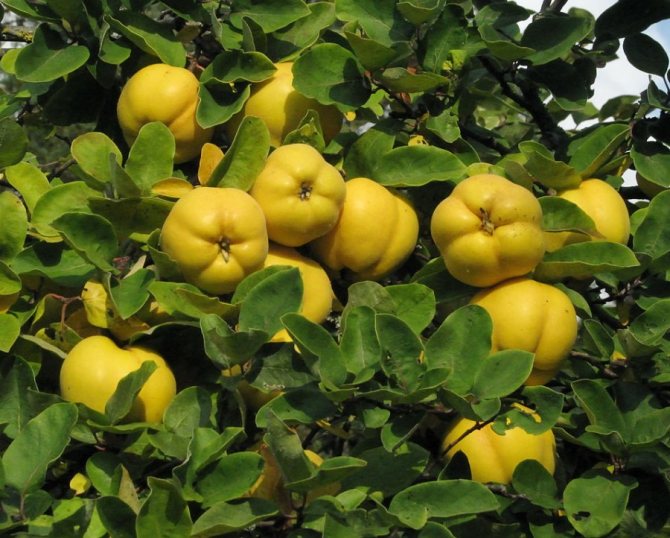

The shrub can be trimmed, while maintaining flowering and fruiting, so it is good for creating hedges. Able to survive, grow and bloom beautifully in a city environment.
There are many decorative garden forms. But it is difficult to find them on sale. Therefore, most often in the gardens you can find non-varietal seedlings. Moreover, this species is easily propagated by seeds, which are sown before winter or spring, after 3-4 months of stratification in the refrigerator.
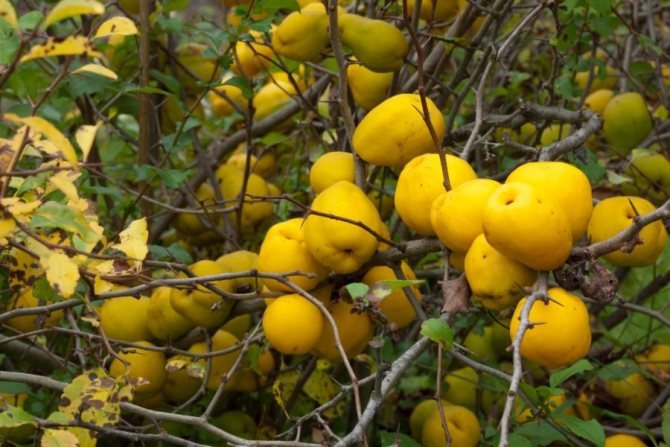

It also reproduces well in all other ways: by layering, green cuttings, root suckers. The purpose is mainly decorative, although the fruits are edible and can be used for culinary processing.
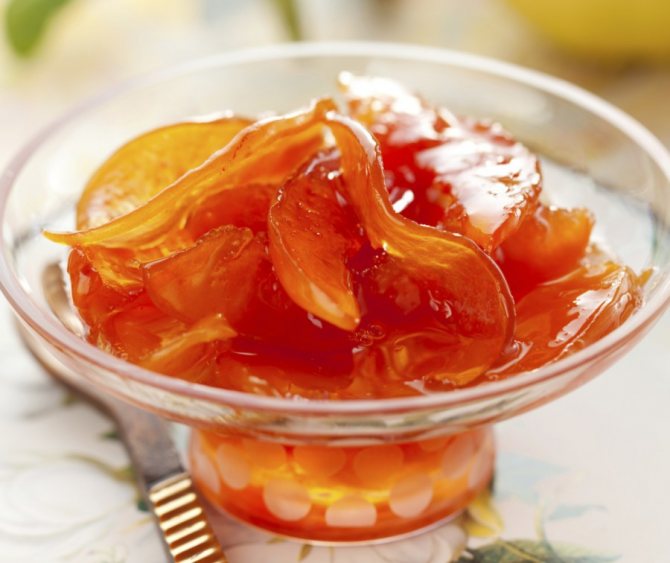

If this wonderful, beautiful and useful plant does not yet grow in your garden - it's time to think about planting it!
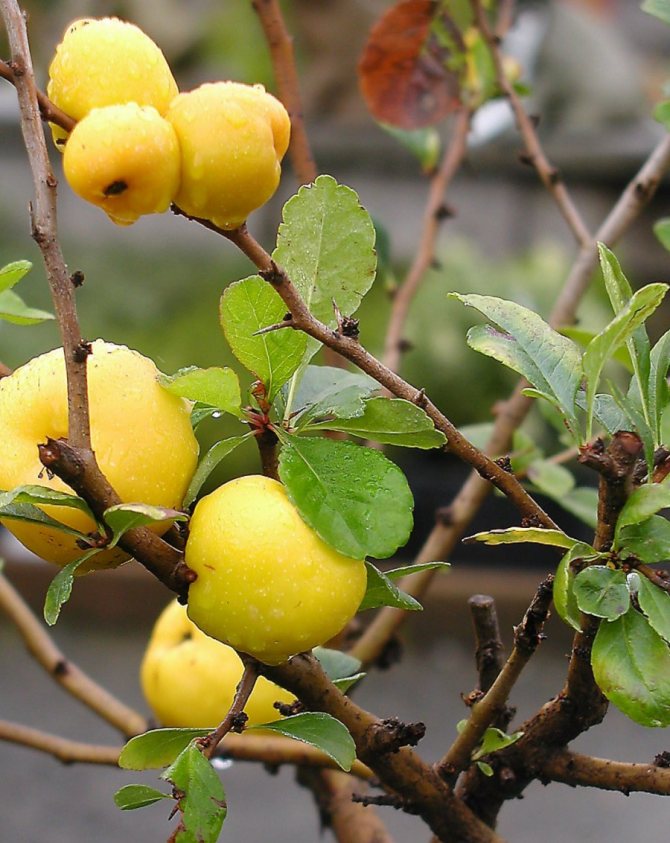

The chemical composition of the fruit
The nutritional value of this product is represented by the following composition:
| Calorie content | 48 kcal / 100 g |
| Protein | 0.6 g |
| Fats | 0.5 g |
| Carbohydrates | 6 g |
| Alimentary fiber | 3.6 g |
| Water | 84 g |
Japanese quince contains a lot of vitamin C, as well as vitamins: B1, B2, E, PP and beta-carotene. The mineral composition is represented by Ca, K, Mg, Na, P and Fe.


Organic acids are presented:
- apple;
- lemon;
- chlorogenic;
- wine;
- fumaric.
The composition contains tannins, pectins, catechins, anthocyanins, tannins, quercetin.
Did you know? 100 g of chaenomeles contains two daily doses of "ascorbic acid" - 182 mg. So it's not for nothing that this plant is also called the "northern lemon".
Use in cosmetology
In cosmetology, quince is used to improve the condition of the skin and hair. The action is achieved due to the content of fruit acids, tannins, vitamins.
For face
Quince based masks and lotions are especially useful for women with oily skin, freckles, age spots, and enlarged pores. To solve each problem, masks are prepared according to different recipes.
- For freckles. Squeeze juice from fresh fruit, dip a cotton pad in it and wipe your face. Due to fruit acids, freckles gradually brighten, excess fat is eliminated, the skin becomes dull.
- From wilting. Add a spoonful of quince juice, honey and vegetable oil to the beaten egg yolk. The mixture is applied to the face, washed off after 15 minutes.
- From wrinkles. Quince is rubbed on a fine grater, egg yolk is added. The mass is evenly distributed over the face, left for 12-15 minutes.
- From oily sheen. The quince is peeled, chopped in a blender, mixed with whipped protein. The mixture is applied to the skin, washed off after 15 minutes.
- Toning lotion. Add two tablespoons of quince juice, a spoonful of glycerin and vodka to a glass of water. The lotion is thoroughly mixed, used to wipe the face in the morning and evening. Store the product in the refrigerator.
For hair
For hair treatment, mainly quince leaves and seeds are used. The tool is chosen depending on the problem that has arisen. The seeds and leaves are used for different purposes.
- Infusion of leaves. Rinsing with infusion of leaves helps to get rid of dandruff, strengthen hair, gives a natural, beautiful shade to dark curls. To prepare the infusion per liter of boiling water, take 100 g of dry leaves. The tool is insisted for an hour, filtered, rinsed hair three times a week.
- Decoction of seeds. To eliminate excess fat content of the strands in a water bath, prepare a decoction from a glass of water and a tablespoon of seeds. Without waiting for complete cooling, the product is rubbed into the scalp, put on a plastic cap, and wrapped in a towel. Keep it for an hour, then wash off with warm water.
A useful procedure is rubbing the skin with a slice of fresh fruit. The acids in the juice act as a light peeling - they cleanse, refresh the skin, increase the tone.
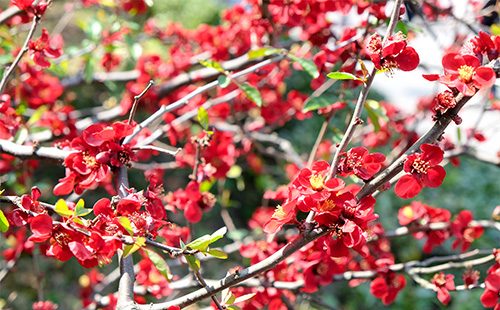

Inclusion in the menu for weight loss
Quince is often included in the diet. Due to the low calorie content, improved metabolism and the digestion process, the effect of weight loss is achieved much faster. The high content of vitamins plays the role of additional support for the body during the diet.
The fruit can be included in the diet in its pure form, decoctions and teas can be prepared from it. A short-term mono-diet is allowed, but it should not last longer than three days. During the diet, they consume only mashed potatoes from boiled or baked quince. For completeness, it is allowed to add a little pumpkin and dried apricots to it. Such a strict diet is only suitable for people with a completely healthy digestive system. A more gentle option is to eat baked quince instead of one of your regular meals.
How to dry?
Before making dried fruits from quince, the fruits are washed, cut out the middle (seeds) and cut into thin slices. It can be dried in the oven for 5-6 hours at a temperature of 90 ° C by opening the door slightly. But this kind of drying is tougher than that prepared in an electric dryer. Before sending the harvested quince to the dryer, you need to boil it in syrup for about 5-7 minutes and let it cool completely. Strain the product and drain the syrup. Put the product in an electric dryer. Drying time depends on the desired result. The average time is 6-7 hours at a temperature not exceeding 50 ° С.
Masks for oily skin
Oily skin needs constant care, especially the cleaning of pores and the introduction of matting and drying agents.
Mask recipes:
- Brightness. To make a toning mask, mix 2 tbsp. l. quince high in protein. Improves blood circulation, brightens skin and tightens pores.
- Moisturizers. 2 teaspoons to mix the red pulp with 1 tbsp. l. quince. This product perfectly removes oily shine, gives a shimmery effect, but at the same time deeply moisturizes cells, keeping them in water and slowing down the aging process.
- Anti-inflammatory agent cleanses pores, improves skin tone, nourishes and eliminates inflammation, eliminates redness and irritation.
- Against acne. Oily skin carriers often suffer from acne. To solve this problem, you can use this recipe: add 1 tbsp. l of white clay and 2 teaspoons. warm milk, then add 2 teaspoons. mashed potatoes. This mask has a drying and bactericidal effect.


Dry skin needs nourishment and environmental protection. It is also important for the dermis to have a high oxygen supply. In this case, the mask should work delicately and easily. All these tasks are perfectly performed by quince.
Mask recipes for dry skin:
- Nutritious. To do this, mix the yolk of a chicken egg with 1 tbsp. l. water, and 1 tsp. honey. The mask incredibly softens the dermis, the yolk does not allow it to dry out and provides deep nutrition to the cells, and honey and quince saturate the skin with microelements and essential vitamins.
- Aging. Many women find that dry skin is not as prone to premature aging as oily skin. At the same time, beauticians say that dry skin has deep wrinkles that are almost impossible to remove. The mask will help to avoid these folds. To do this, mix 1 tbsp. l. mashed potatoes 1 tbsp. l banana puree, 1 teaspoon. olive oil and 1-2 teaspoons of cream to get the right consistency. The product smoothes, deeply nourishes the skin and supports the production of natural collagen.
- Protective. Suitable for use in the cold season, when a woman is often tormented by skin irritations. Quince can be mixed with glycerin. The face with this mask will be protected with a special film. The remnants of the mask should be washed off with a towel. Can only be washed the next day.
The benefits of leaves
- Various teas and decoctions are prepared on the basis of the leaves. It is not only a pleasant, aromatic drink, but also a therapeutic and prophylactic remedy for many diseases. The broth has established itself as a remedy for gray hair.
- A decoction of the leaves is recommended as an adjunctive therapy for asthma.
- Infusions on the leaves alleviate the condition with hemorrhoids, quickly stop bleeding and relieve the inflammatory process. They have enveloping and bactericidal properties.
- The leaves contain vitamins that normalize metabolism, bowel and heart function. Promote the cleansing of blood vessels.
